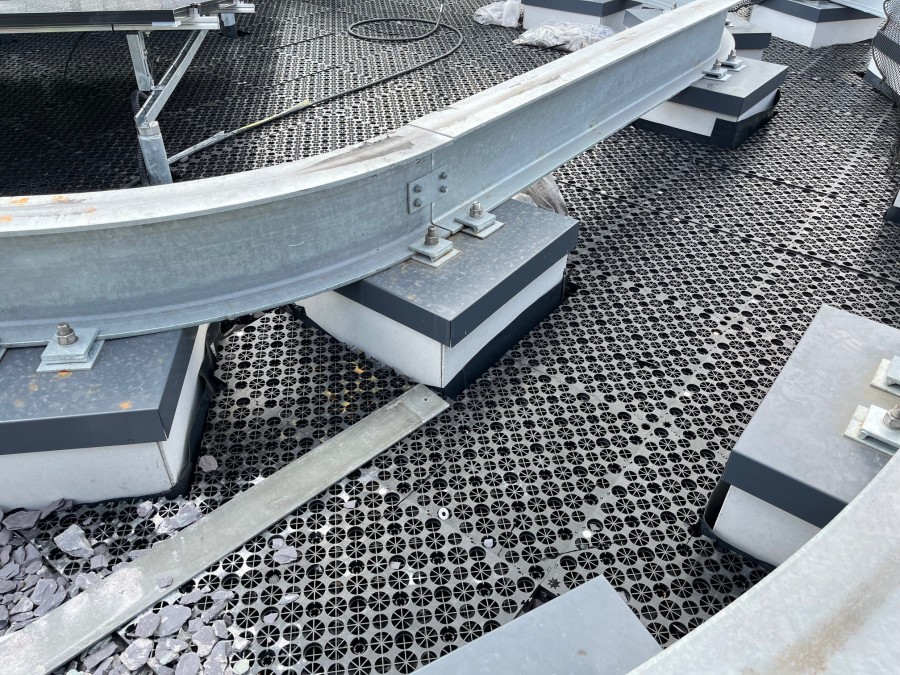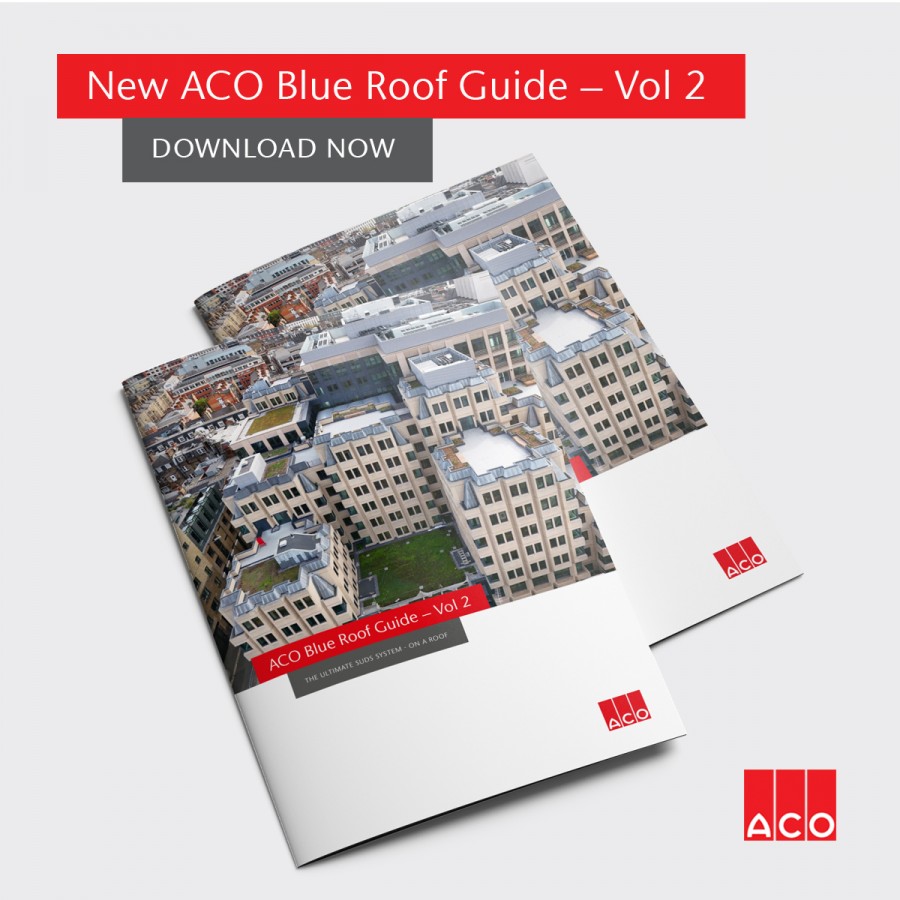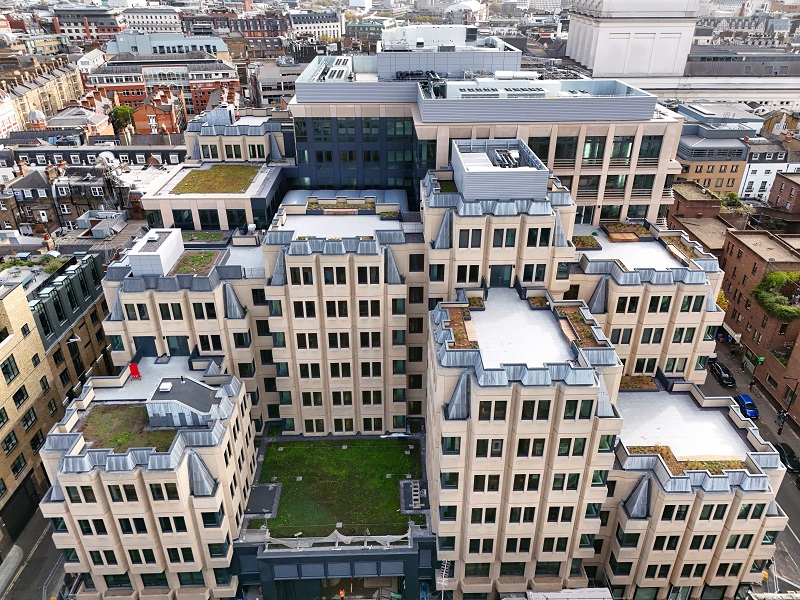
With climate extremes increasing and urban drainage networks under growing stress, ACO Building Drainage has published the second volume of its Blue Roof Guide to help architects, engineers, specifiers and contractors design resilient, multi-functional roofscapes.
The new guide explains how blue and blue-green roof systems can store and manage rainfall on site, reduce peak flows to overstretched sewers and support passive irrigation and biodiversity on roof areas.
The guide, titled ‘ACO Blue Roof Guide – Vol 2’, follows the success of ACO’s first volume of its Blue Roof Guide, launched in October 2024, and builds on the criteria established for safe and sustainable drainage.
The second volume of the Blue Roof Guide is evidence of ACO’s commitment to clean water, sustainability, and supporting the construction industry in creating an eco-friendly future.
Volume 2 sets out the principles of off-membrane storage and offers practical design and delivery advice for architects, engineers, specifiers and contractors. It highlights blue roofs as an increasingly important tool in urban developments by storing water temporarily and releasing it slowly to lessen flood risk while enabling green and biosolar roof functions to coexist without compromising waterproofing.
Technical sections go into detail about ACO’s patented RoofBloxx system: a shallow, high-strength geocellular attenuation layer designed to sit independently of the roof membrane. Implementation and installation are also discussed, including together with the proper use of flow restrictors, access and diffuser units, capillary wicks and reservoir trays. When combined, these components manage run-off rates, support passive irrigation for sedum and planted systems, and reduce the need for heavy ballast by stabilising insulation.

Neill Robinson-Welsh, who has led more than 750 blue roof projects during his 14 years with ACO, said: “Blue roofs are no longer an optional extra but a practical response to the twin pressures of heavier rainfall and growing water stress. Our approach uses ACO RoofBloxx to store water off the waterproofing layer, simplifying integration with green and biosolar elements and reducing the risk of membrane failure. The new guide reflects what we’ve learned on real projects and sets out design and maintenance steps that make blue roofs reliable.”
Practical chapters focus on early-stage coordination, addressing outlet positioning, roof slope and structural implications, as well as maintenance-friendly design through permanent access chambers and twice-yearly inspections, and emphasising the importance of accurate hydraulic calculations to meet planning limits while preserving architectural constraints.
ACO stresses that designers need to treat blue roofs as system integration exercises, and by coordinating landscape, photovoltaics and other services early it will help to avoid late, costly revisions.
Volume 2 is positioned as a hands-on resource for teams planning multifunctional roofs where water management, ecology and service access must all be reconciled.
To download the guide, see ACO.co.uk.












